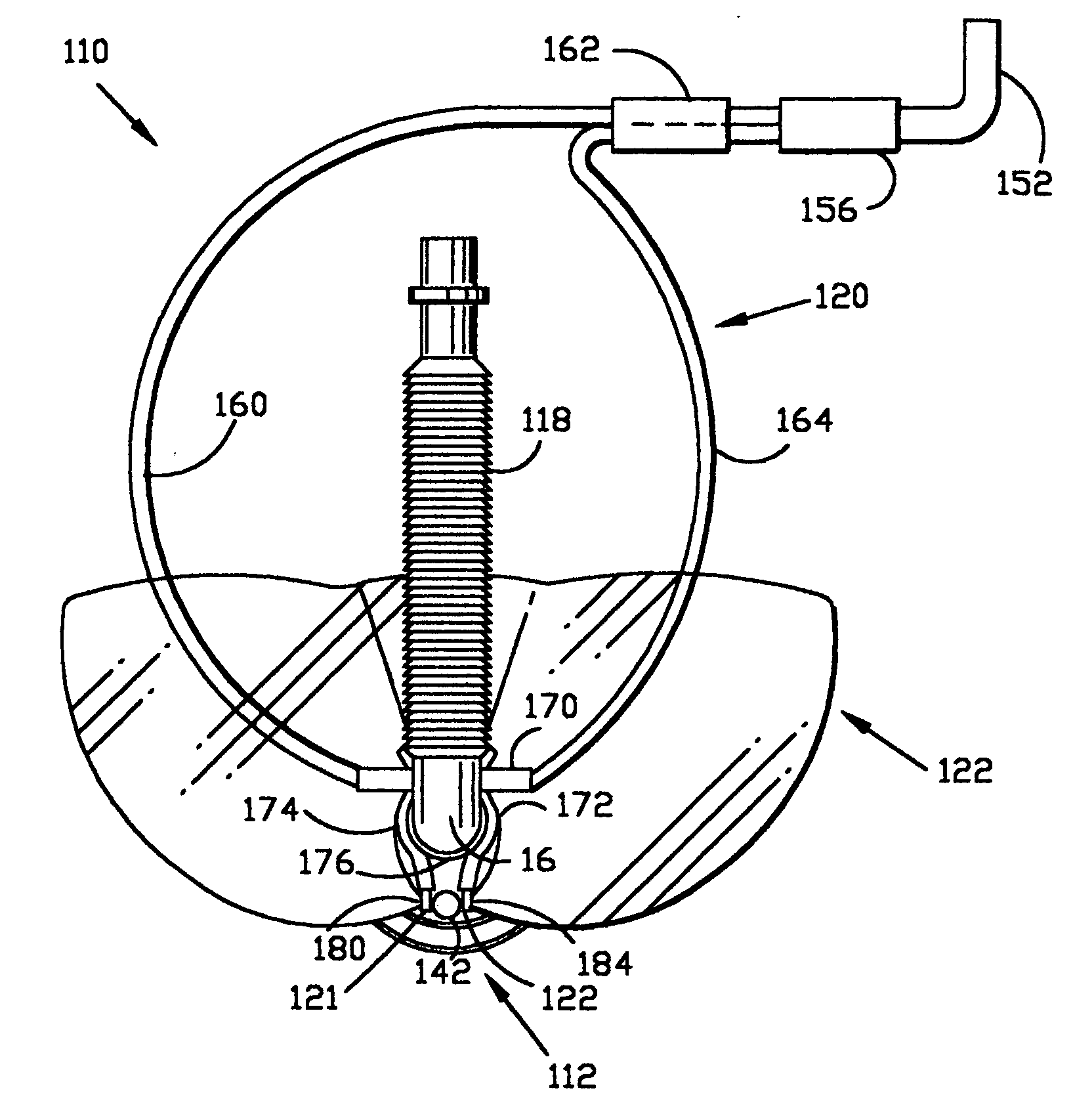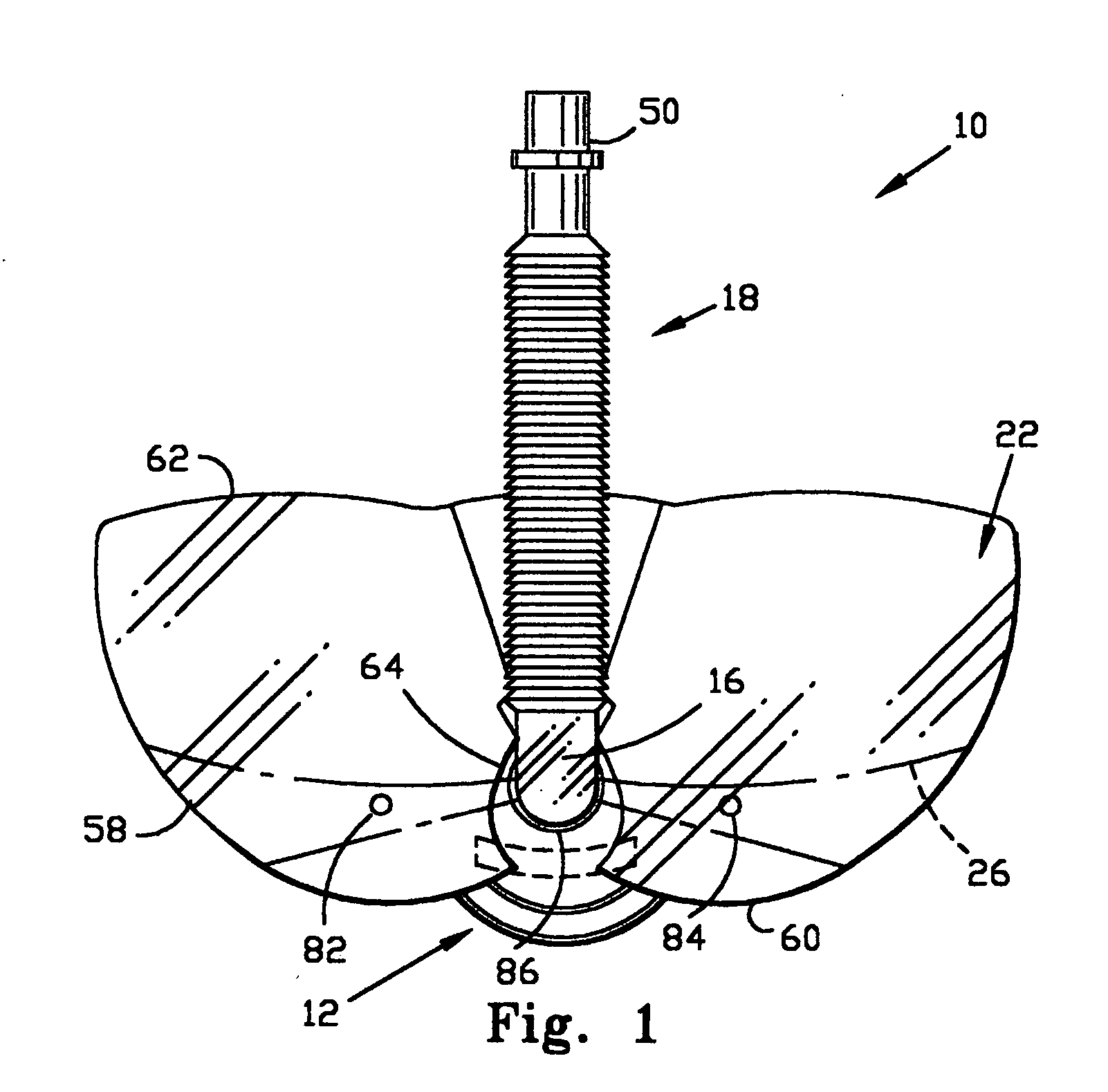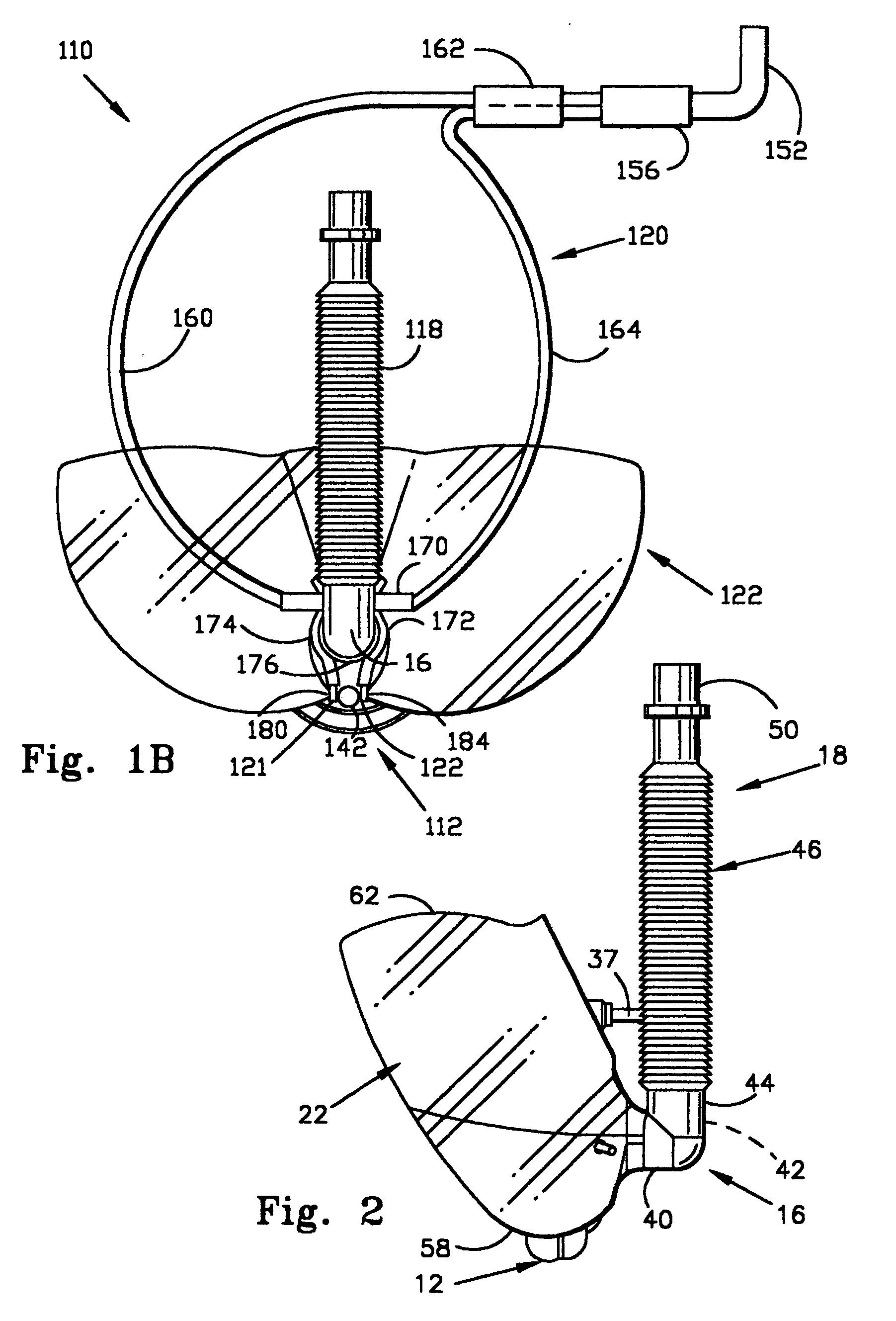Dental anesthesia administration mask and eye shield
an anesthesia and eye shield technology, applied in the field of anesthesia delivery devices, can solve the problems of dentists not being able to access the patient's mouth, imposing certain constraints on the use of normal anesthesia face masks, and inability to provide intubation, so as to maximize the delivery of anesthesia gas and minimize the amount of gas los
- Summary
- Abstract
- Description
- Claims
- Application Information
AI Technical Summary
Benefits of technology
Problems solved by technology
Method used
Image
Examples
first embodiment
[0049] A. First Embodiment of the Anesthesia Device of the Present Invention
[0050] FIG. 1 shows a first embodiment of a dental anesthesia device that includes a mask having an integrated eye protector 10 that includes an anesthesia mask 12, an elbow tube 16, a gas line 18, an eye mask 22, and a strap 26. The elbow tube 16 is coupled to an air tube fitting port 36 of the anesthesia mask 12. The gas line 18 is coupled at one end to the elbow tube 16 and, during use, is coupled at its other end to a gas outlet line of an anesthesia machine 52 (FIG. 8). The eye mask 22, shown as a sheet-like component, is coupled to the device 10 to provide eye protection for the patient. The strap 26 is coupled to the device 10 to hold the device 10 securely to the head of a patient during a procedure. FIG. 8 depicts the use of an endless elastic band type strap 68 that is coupled to the mask 12 by coupling the strap 68 to posts that extend outwardly from the front of the mask. First alternate embodime...
PUM
 Login to View More
Login to View More Abstract
Description
Claims
Application Information
 Login to View More
Login to View More - R&D
- Intellectual Property
- Life Sciences
- Materials
- Tech Scout
- Unparalleled Data Quality
- Higher Quality Content
- 60% Fewer Hallucinations
Browse by: Latest US Patents, China's latest patents, Technical Efficacy Thesaurus, Application Domain, Technology Topic, Popular Technical Reports.
© 2025 PatSnap. All rights reserved.Legal|Privacy policy|Modern Slavery Act Transparency Statement|Sitemap|About US| Contact US: help@patsnap.com



